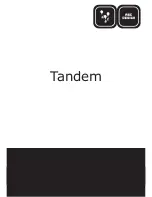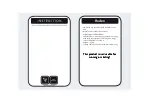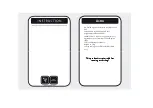
8
T R I S T A R D E S C R I P T I O N
9
M O R N I N G S T A R C O R P O R A T I O N
1
.0
1.3 Adjustibility
Eight DIP switches permit the following parameters to be adjusted at the
installation site:
DIP switch
Solar Battery Charging
1
Battery charge control mode
2-3
Select battery voltage
4-6
Standard battery charging programs
7
Manual or automatic equalization
8
PWM charging or on-off charging
DIP switch
Load Control
1
DC load control mode
2-3
Select battery voltage
4-6
Standard low voltage disconnects and reconnects
7
not used for load control
8
not used for load control
DIP switch
Diversion Charge Control
1
DC load control mode
2-3
Select battery voltage
4-6
Standard diversion charge control programs
7
Select diversion charge control mode
8
Manual or automatic equalization
In addition to the DIP switches, the TriStar provides for additional adjust ments
using a PC program. An RS-232 connection between the TriStar and
a personal computer will enable extensive adjustments using PC software
from Morningstar’s website.
1.4 General Use
NOTE: This manual describes solar battery charging. Specific instructions for
the load control and diversion charge control modes are provided as notes
throughout this manual.
REMARQUE : Ce manuel décrit la charge de batteries solaires. Des
instructions spécifiques aux modes de contrôle du chargement et de contrôle
de la charge de diversion figurent en tant que remarques dans ce manuel.
The TriStar is suitable for a wide range of solar applications including homes,
telecom and industrial power needs.
TriStar controllers are configured for negative ground systems. There are no
parts in the controller’s negative leg. The enclosure can be grounded using
the ground terminal in the wiring compartment.
The TriStar is protected from faults electronically with automatic recovery.
There are no fuses or mechanical parts inside the TriStar to reset or change.
Solar overloads up to 130% of rated current will be tapered down instead of
disconnecting the solar. Over-temperature conditions will also taper the solar
input to lower levels to avoid a disconnect.
The NEC requires overcurrent protection externally in the system (see
Section 2.3 step 6). There are no system disconnects inside the TriStar
enclosure.
Any number of TriStars can be connected in parallel to increase solar
charging current. TriStars can be paralleled ONLY in the battery charging
mode. DO NOT parallel TriStars in the load mode, as this can damage the
controller or load.
The TriStar enclosure is rated for indoor use. The controller is protected
by conformal coated circuit boards, stainless steel hardware, anodized
aluminum, and a powder coated enclosure, but it is not rated for corrosive
environments or water entry.
The construction of the TriStar is 100% solid state.
Battery charging is by a series PWM constant current charging, with bulk
charging, PWM absorption, float and equalization stages.
The TriStar will accurately measure time over long intervals to manage events
such as automatic equalizations or battery service notification.
Day and night conditions are detected by the TriStar, and no blocking diodes
are used in the power path.
LEDs, a push-button, and optional digital meters provide both status
information and various manual operations.
The date of manufacture can be found on the two bar code labels. One label
is on the back of the TriStar, and the other is in the wiring compartment. The
year and week of manufacture are the first four digits of the serial number. For
example:
year week
serial #
03 36
0087








































